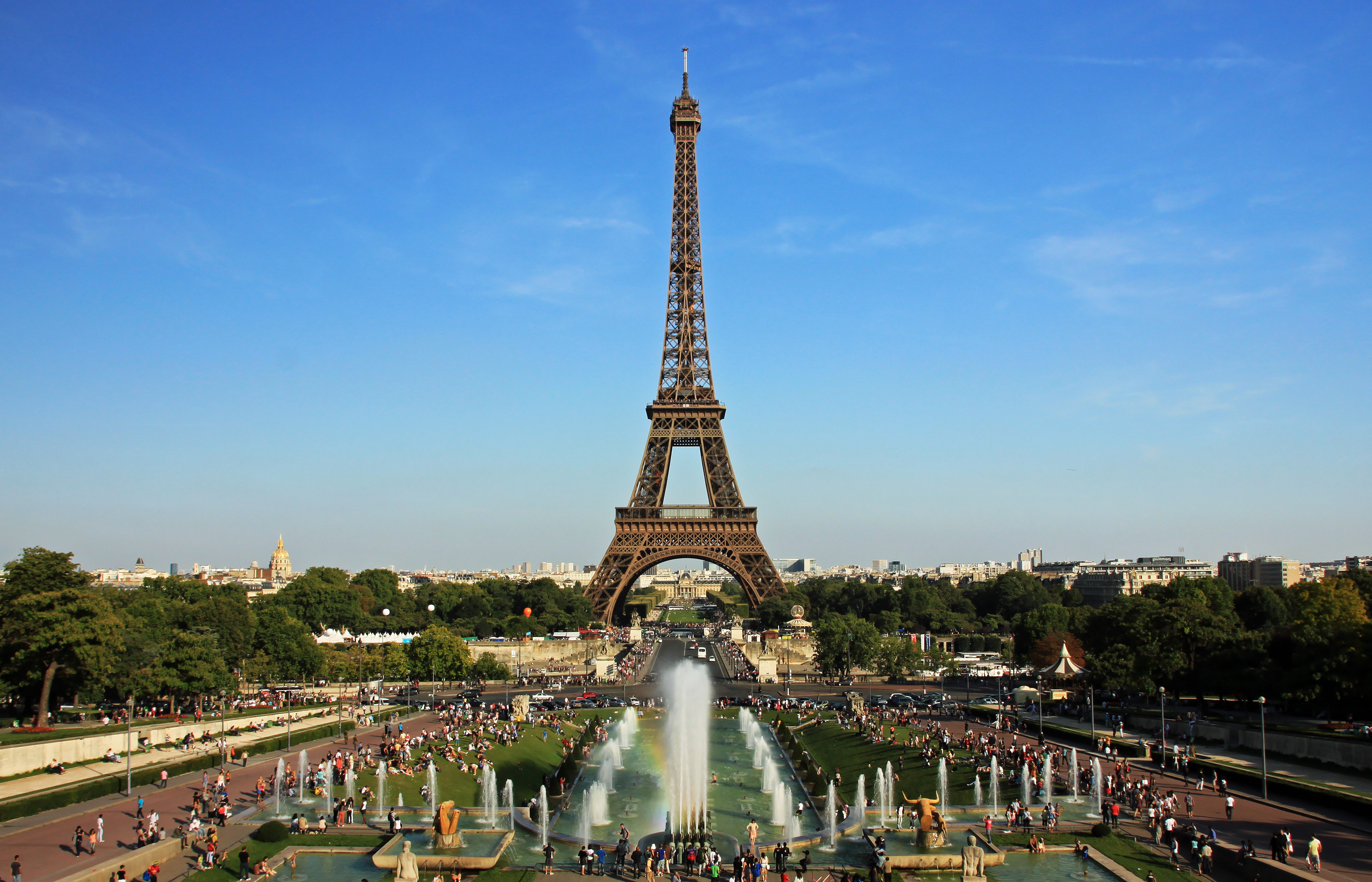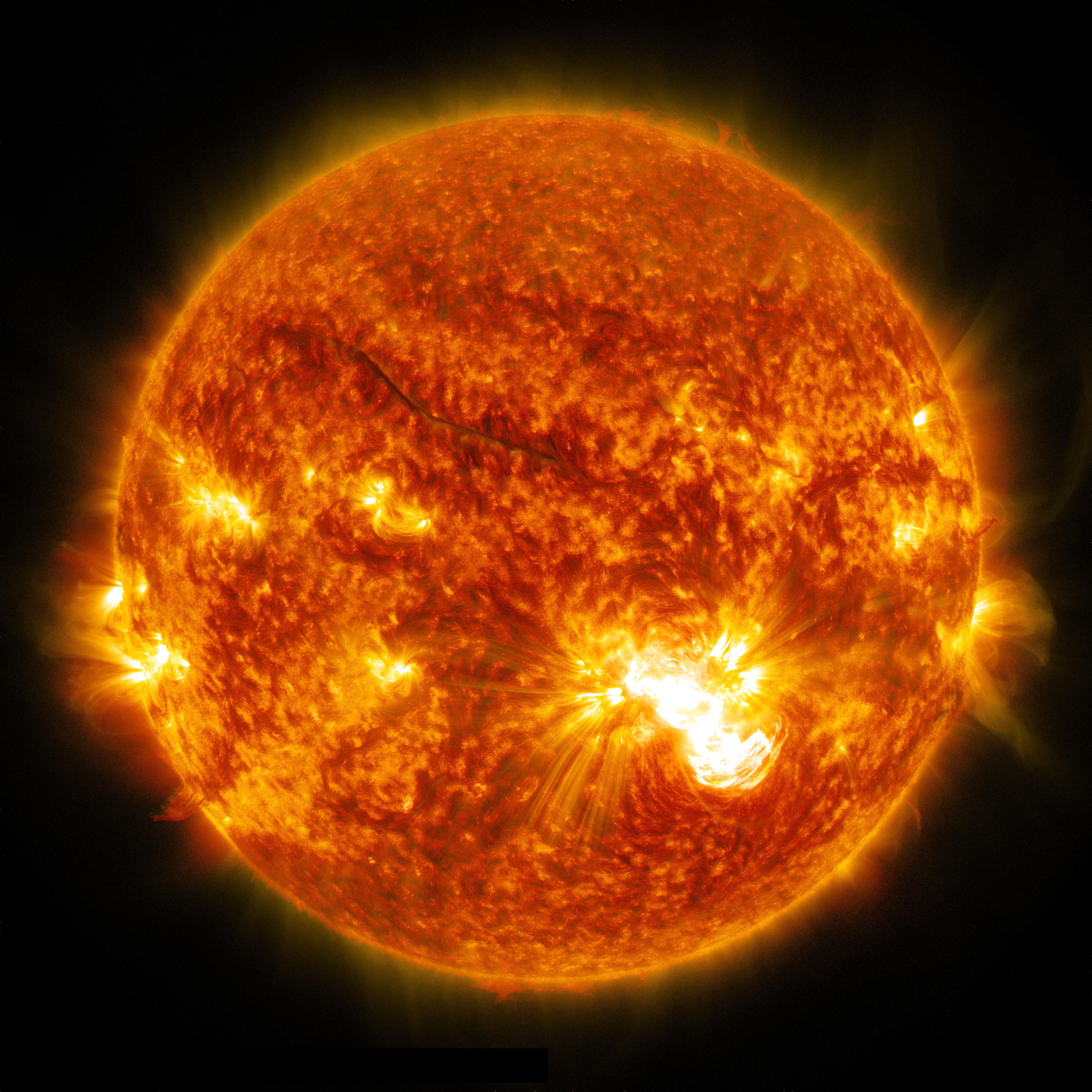1. Babies have around 100 more bones than adults

Babies have about 300 bones at birth, with cartilage between many of them. This extra flexibility helps them pass through the birth canal and also allows for rapid growth. With age, many of the bones fuse, leaving 206 bones that make up an average adult skeleton.
2. The Eiffel Tower can be 15 cm taller during the summer

When a substance is heated up, its particles move more and it takes up a larger volume – this is known as thermal expansion. Conversely, a drop in temperature causes it to contract again. The mercury level inside a thermometer, for example, rises and falls as the mercury’s volume changes with the ambient temperature. This effect is most dramatic in gases but occurs in liquids and solids such as iron too. For this reason large structures such as bridges are built with expansion joints which allow them some leeway to expand and contract without causing any damage.
3. 20% of Earth’s oxygen is produced by the Amazon rainforest

Our atmosphere is made up of roughly 78 per cent nitrogen and 21 per cent oxygen, with various other gases present in small amounts. The vast majority of living organisms on Earth need oxygen to survive, converting it into carbon dioxide as they breathe. Thankfully, plants continually replenish our planet’s oxygen levels through photosynthesis. During this process, carbon dioxide and water are converted into energy, releasing oxygen as a by-product. Covering 5.5 million square kilometres (2.1 million square miles), the Amazon rainforest cycles a significant proportion of the Earth’s oxygen, absorbing large quantities of carbon dioxide at the same time.
4. Some metals are so reactive that they explode on contact with water

There are certain metals – including potassium, sodium, lithium, rubidium and caesium – that are so reactive that they oxidise (or tarnish) instantly when exposed to air. They can even produce explosions when dropped in water! All elements strive to be chemically stable – in other words, to have a full outer electron shell. To achieve this, metals tend to shed electrons. The alkali metals have only one electron on their outer shell, making them ultra-keen to pass on this unwanted passenger to another element via bonding. As a result they form compounds with other elements so readily that they don’t exist independently in nature.
5. A teaspoonful of neutron star would weigh 6 billion tons

A neutron star is the remnants of a massive star that has run out of fuel. The dying star explodes in a supernova while its core collapses in on itself due to gravity, forming a super-dense neutron star. Astronomers measure the mind-bogglingly large masses of stars or galaxies in solar masses, with one solar mass equal to the Sun’s mass (that is, 2 x 1030 kilograms/4.4 x 1030 pounds). Typical neutron stars have a mass of up to three solar masses, which is crammed into a sphere with a radius of approximately ten kilometres (6.2 miles) – resulting in some of the densest matter in the known universe.
6. Hawaii moves 7.5cm closer to Alaska every year

The Earth’s crust is split into gigantic pieces called tectonic plates. These plates are in constant motion, propelled by currents in the Earth’s upper mantle. Hot, less-dense rock rises before cooling and sinking, giving rise to circular convection currents which act like giant conveyor belts, slowly shifting the tectonic plates above them. Hawaii sits in the middle of the Pacific Plate, which is slowly drifting north-west towards the North American Plate, back to Alaska. The plates’ pace is comparable to the speed at which our fingernails grow.
7. Chalk is made from trillions of microscopic plankton fossils

Tiny single-celled algae called coccolithophores have lived in Earth’s oceans for 200 million years. Unlike any other marine plant, they surround themselves with minuscule plates of calcite (coccoliths). Just under 100 million years ago, conditions were just right for coccolithophores to accumulate in a thick layer coating ocean floors in a white ooze. As further sediment built up on top, the pressure compressed the coccoliths to form rock, creating chalk deposits such as the white cliffs of Dover. Coccolithophores are just one of many prehistoric species that have been immortalised in fossil form, but how do we know how old they are? Over time, rock forms in horizontal layers, leaving older rocks at the bottom and younger rocks near the top. By studying the type of rock in which a fossil is found palaeontologists can roughly guess its age. Carbon dating estimates a fossil’s age more precisely, based on the rate of decay of radioactive elements such as carbon-14.
8. In 2.3 billion years it will be too hot for life to exist on Earth

Over the coming hundreds of millions of years, the Sun will continue to get progressively brighter and hotter. In just over 2 billion years, temperatures will be high enough to evaporate our oceans, making life on Earth impossible. Our planet will become a vast desert similar to Mars today. As it expands into a red giant in the following few billion years, scientists predict that the Sun will finally engulf Earth altogether, spelling the definite end for our planet.
9. Polar bears are nearly undetectable by infrared cameras

Thermal cameras detect the heat lost by a subject as infrared, but polar bears are experts at conserving heat. The bears keep warm due to a thick layer of blubber under the skin. Add to this a dense fur coat and they can endure the chilliest Arctic day.
10. It takes 8 minutes, 19 seconds for light to travel from the Sun to the Earth

In space, light travels at 300,000 kilometres (186,000 miles) per second. Even at this breakneck speed, covering the 150 million odd kilometres (93 million miles) between us and the Sun takes a considerable time. And eight minutes is still very little compared to the five and a half hours it takes for the Sun’s light to reach Pluto.
11. If you took out all the empty space in our atoms, the human race could fit in the volume of a sugar cube

The atoms that make up the world around us seem solid, but are in fact over 99.99999 per cent empty space. An atom consists of a tiny, dense nucleus surrounded by a cloud of electrons, spread over a proportionately vast area. This is because as well as being particles, electrons act like waves. Electrons can only exist where the crests and troughs of these waves add up correctly. And instead of existing in one point, each electron’s location is spread over a range of probabilities – an orbital. They thus occupy a huge amount of space.
12. Stomach acid is strong enough to dissolve razor blades

Your stomach digests food thanks to highly corrosive hydrochloric acid with a pH of 2 to 3. This acid also attacks your stomach lining, which protects itself by secreting an alkali bicarbonate solution. The lining still needs to be replaced continually, and it entirely renews itself every four days.
13. The Earth is a giant magnet

Earth’s inner core is a sphere of solid iron, surrounded by liquid iron. Variations in temperature and density create currents in this iron, which in turn produce electrical currents. Lined up by the Earth’s spin, these currents combine to create a magnetic field, used by compass needles worldwide.
14. Venus is the only planet to spin clockwise

Our Solar System started off as a swirling cloud of dust and gas which eventually collapsed into a spinning disc with the Sun at its centre. Because of this common origin, all the planets move around the Sun in the same direction and on roughly the same plane. They also all spin in the same direction (counterclockwise if observed from ‘above’) – except Uranus and Venus. Uranus spins on its side, while Venus defiantly spins in the complete opposite direction. The most likely cause of these planetary oddballs are gigantic asteroids which knocked them off course in the distant past.
15. A flea can accelerate faster than the Space Shuttle

A jumping flea reaches dizzying heights of about eight centimetres (three inches) in a millisecond. Acceleration is the change in speed of an object over time, often measured in ‘g’s, with one g equal to the acceleration caused by gravity on Earth (9.8 metres/32.2 feet per square second). Fleas experience 100 g, while the Space Shuttle peaked at around 5 g. The flea’s secret is a stretchy rubber-like protein which allows it to store and release energy like a spring

No comments:
Post a Comment